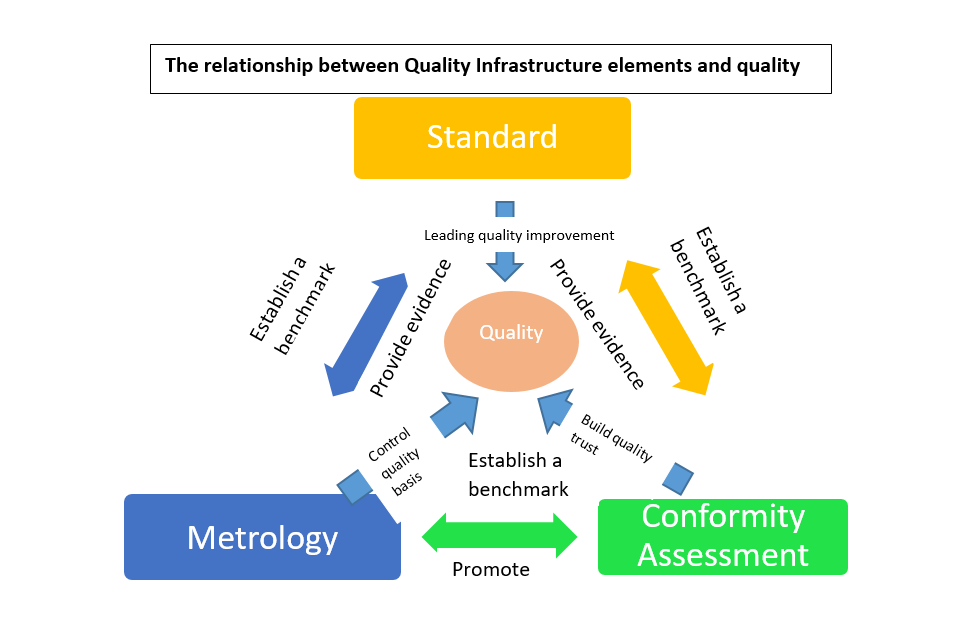
Department of
National Trade Measurement and Standards
E-Learning Portal
Module 2: Quality Promotions

Quality
Quality refers to all those features of a product (or service) which are required by the customer. It can be also defined as “Fitness for use”, customer satisfaction, “doing things right the first time,” or “zero defects”. For example, expensive leather shoes can be regarded as luxury products but failing to meet the quality requirements of a farmer who really needs a pair of much less expensive rubber boots fit for his purpose of working in muddy fields.
To create quality culture, it is important to use standards in your manufacturing processes or services.
The concept of quality as being fit for purpose and meeting customer needs allows a Quality Infrastructure System to be used for producing effective results in meeting all variety of challenges, in addition to product or service quality.
QIS is catalyst for improving the quality of products and services on a national scales.

Quality Infrastructure System
Quality Infrastructure, (QI) is the system put in place to ensure products and services are safe and of high quality. It consists of standardization, testing, metrology, certification, accreditation and market surveillance.
1: Standardisation
2: Metrology
3: Market Surveillance
4: Accreditation
5: Conformity
Important Link:
https://publicsectorassurance.org/supporting-material/the-benefits-of-a-quality-infrastructure-unido-2016/
Question 1:
What are main components of QIS?




